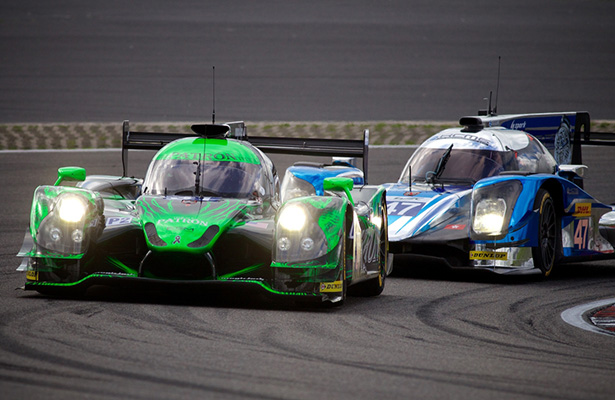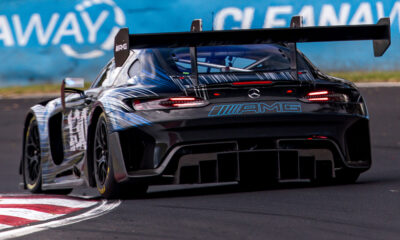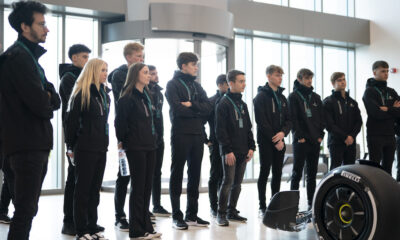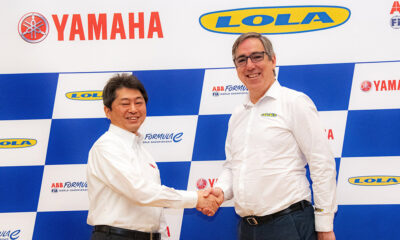
Photo: John Dagys
Following Monday’s initial article, Sportscar365 wraps up its preliminary look at the 2017 Daytona Prototype international (DPi) regulations with IMSA VP of Competition Simon Hodgson and Director of Racing Platforms Mark Raffauf.
The road to the new-for-2017 Prototype regulations in the IMSA WeatherTech SportsCar Championship is well underway, despite not a single manufacturer yet formally announcing its commitment to the Daytona Prototype international (DPi) platform.
However, according to Director of Racing Platforms Mark Raffauf, IMSA has already been working with prospective manufacturers on the early stages of the approval process for series-specific engine and bodywork package proposals.
“We’re able to deal with it now,” Raffauf told Sportscar365. “It’s up to them to produce what they want us to look at.
“There’s a process of CAD approval for dimensional appliance, CFD testing with our CFD and their files, which is a collaboration of taking that result and saying ‘This is where we need to go to make sure the car is functional. Go ahead and make molds and parts.’
“The final test is the wind tunnel, which is in the fall into December so that everyone has the maximum amount of time.”
Unlike the timeframe established for the standard new LMP2 machinery by the FIA and ACO, Raffauf said IMSA is on an accelerated schedule, in order to meet the deadline of having cars on the grid at the 2017 Rolex 24 at Daytona.
While the draft homologations of each of the four global constructors is not due until Sept. 1, it’s likely cars will be out testing before then, but perhaps not in full IMSA DPi specification.
“I think it will be sooner than people expect,” Raffauf said. “The cars will be running. They may have not completed their full FIA/ACO homologation yet because that timeframe is very clear.
“But that doesn’t preclude them from testing with existing drivelines in them, using the basic bodywork to start with, because that’s easier to do and has more applications.”
With IMSA teams exempt from any testing restrictions with 2017 cars, Raffauf is hopeful of seeing manufacturers get a jump start on development, prior to the final engine and bodywork homologations late this year.
Another key point in the regulations is the implementation of a new Balance of Performance process, utilizing wind tunnel and dyno testing, along with a new set of data loggers. The same procedure was introduced to the new GT Le Mans and GT Daytona classes this year.
For 2017, existing closed-top LMP2 cars, such as the Ligier JS P2, Oreca 05 and BR Engineering BR01, will be grandfathered into the new-look P class alongside the new DPi and LMP2 cars, although Raffauf said they will remain at 2016 performance levels.
As for the potential of additional prototype machinery being allowed in, he said LMP2/DPi is “pretty much the box we’re playing in right now.” The status of the DeltaWing is unknown as a decision has not yet been taken.
Of note, Raffauf said IMSA will not require a manufacturer to make its engine and bodywork available to customers, although according to VP of Competition Simon Hodgson, the hope would be to have multiple teams utilizing bespoke chassis-engine-bodywork packages.
“Obviously we’ve got high hopes,” Hodgson told Sportscar365. “But at the same time a lot of people’s focus has been on singular thinking that if an OEM comes in that they’ll be aligned with one constructor, which they will be.
“But I wouldn’t be surprised to see some of these OEMs partner up with more than a few teams and make [the bodywork and engines] available. But that’s been speculative.
“The whole nature of this is that it’s a good investment, especially for those that already have an engine package in place.”
It’s believed that at least one of the proposed manufacturers has yet to decide on whether to focus efforts around a single designated factory operation or to make its package available to multiple works-supported teams.
While it’s unclear whether the new formula will deliver an immediate boost to the rather sparse eight-car full-season P class grid that’s projected for this year, Hodgson has stressed the importance of having a mix of factory and privateer entrants.
“We expect this to create some clear vision for manufacturers but a lot of our success is based on privateer entries as well,” he said.
“There’s the ability for people to bring spec prototype here and to compete in our premier class as well.”
With manufacturer announcements still to come, followed by the design, build and on-track testing process for each package, 2016 will be a busy year for the manufacturers and teams in the build-up to the new era of North American prototype racing.



























